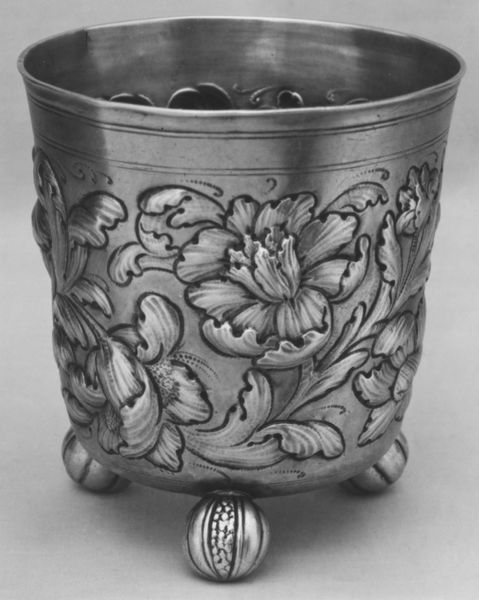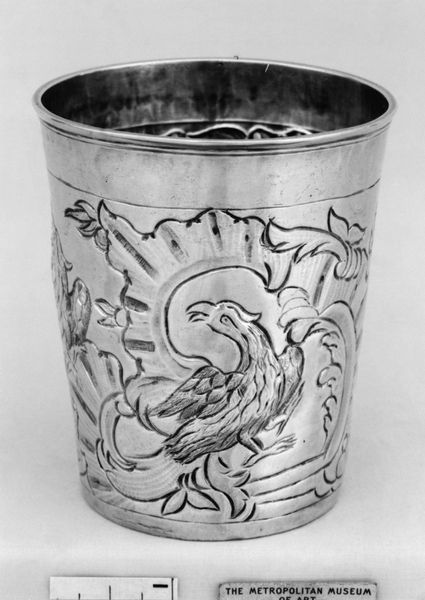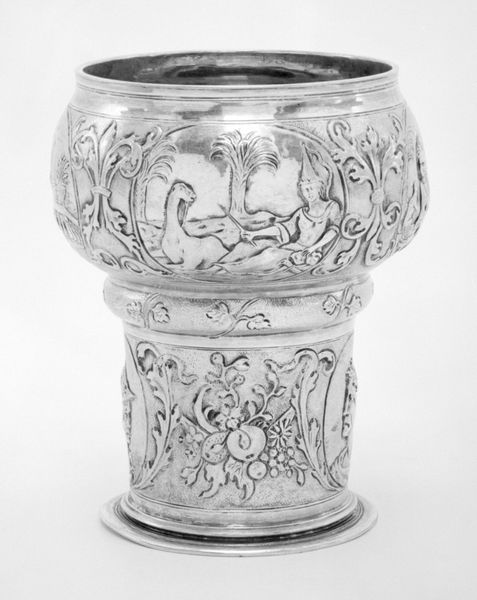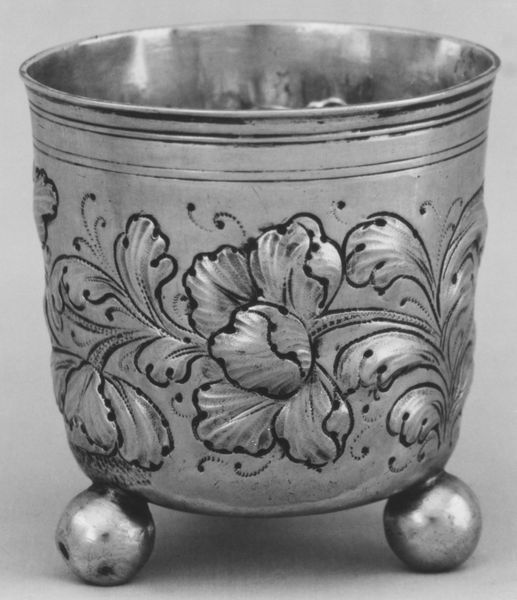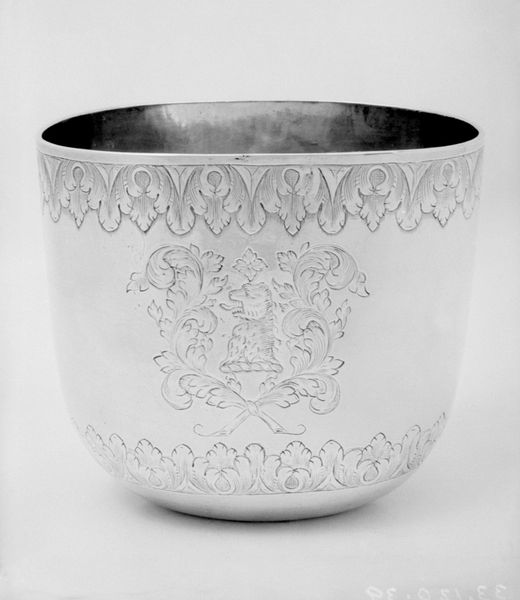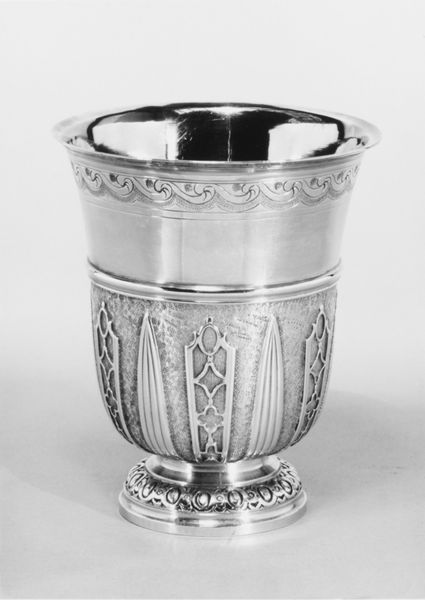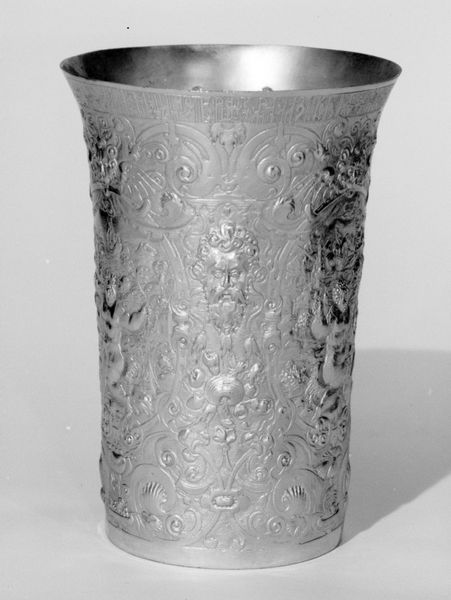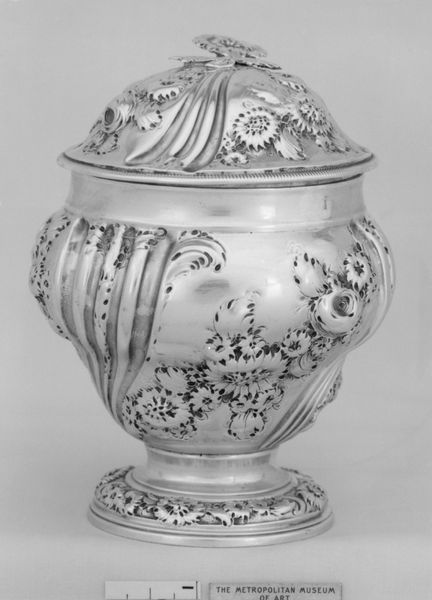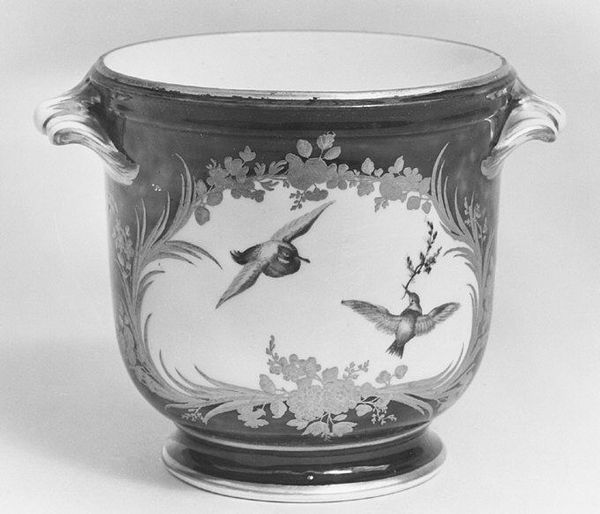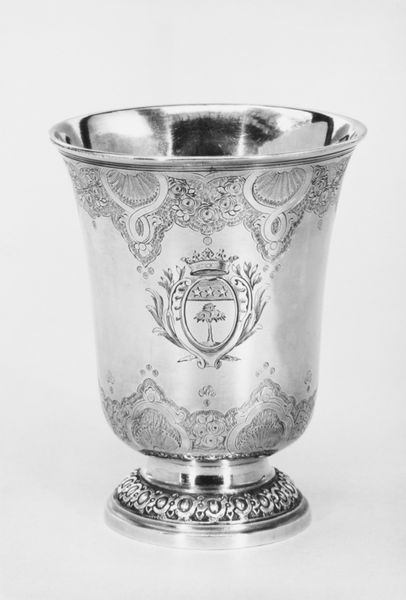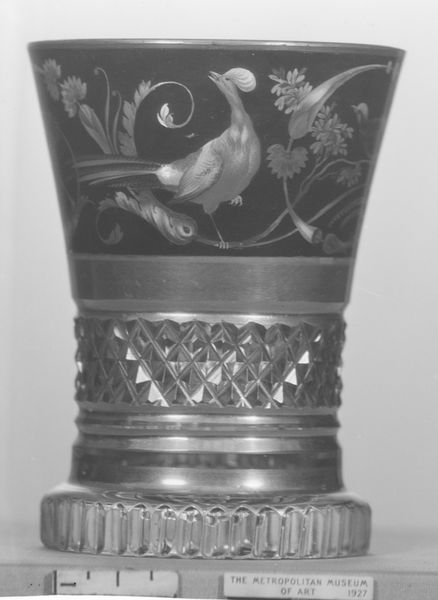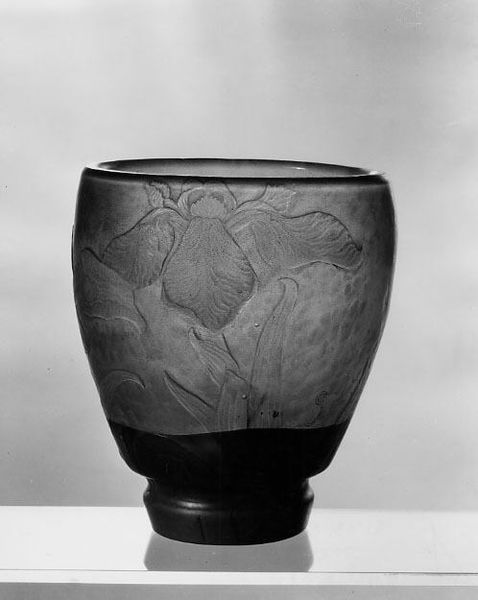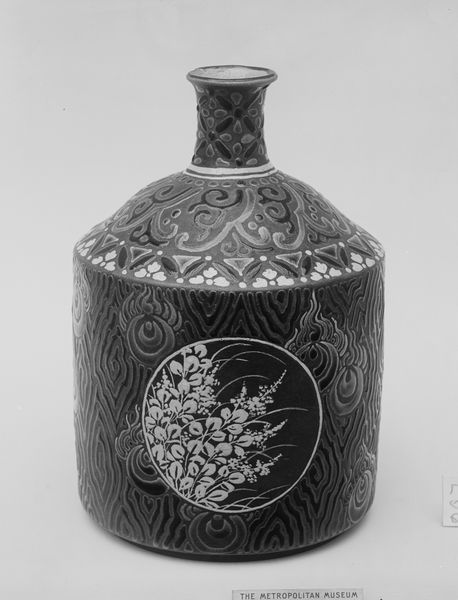
silver, metal, metalwork-silver, sculpture
#
decorative element
#
silver
#
metal
#
flower
#
metalwork-silver
#
sculpture
#
decorative-art
Dimensions: 2 7/8 × 3 in. (7.3 × 7.6 cm)
Copyright: Public Domain
Curator: This striking silver beaker dates to 1687-1688 and is currently held at The Metropolitan Museum of Art. Note the engraved floral decoration. Editor: It’s a curious piece, almost austere, despite the floral motifs. The octagonal form gives it a rigid structure that seems at odds with the organic, flowing engravings. Curator: That tension is key, isn’t it? Consider the social context; silverwork like this wasn't merely decorative. Its value reflected the owner's status and played a role in displaying wealth and taste. The act of producing something like this was time intensive. Who was it produced for, and who labored to create it? Editor: Right, but look closer at the individual panels. Each flower, distinct in its rendering, invites the eye to circle the piece. There’s a rhythmic quality, an implied narrative created through these repeating, yet individualized forms. The material shines even in grayscale! Curator: Agreed. Silver's malleability made this type of intricate detailing possible. Each mark is a result of craft and control—both physically from the person doing the engraving, and as a representation of a controlled form of power from the one commissioning the work. What could they be drinking from it, though? Was it wine, or mead? Editor: Good point, but the flowers themselves might provide clues as to other symbolic references of nature and opulence. It would require deep visual analysis and a closer study of their semiotics, and it's a very appealing topic to examine and to study for that very reason. Curator: True. Reflecting on this object, it's fascinating to trace how this simple utilitarian form becomes so intricately tied to production, class, and display. Editor: And through formal elements such as the octagonal shape and floral arrangements, to consider its intrinsic artistic statement. The way it simultaneously resists and invites adornment is quite brilliant.
Comments
No comments
Be the first to comment and join the conversation on the ultimate creative platform.
